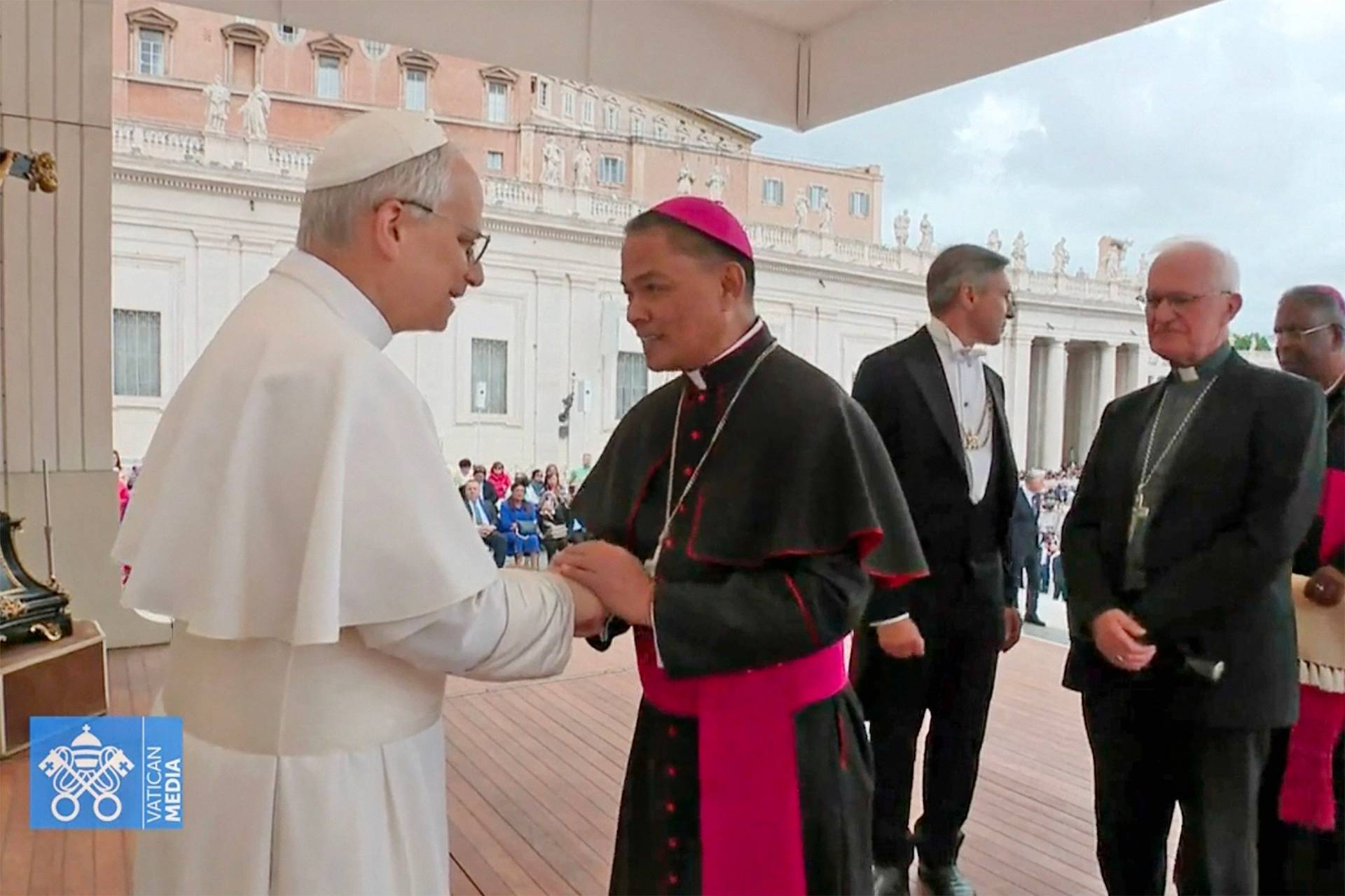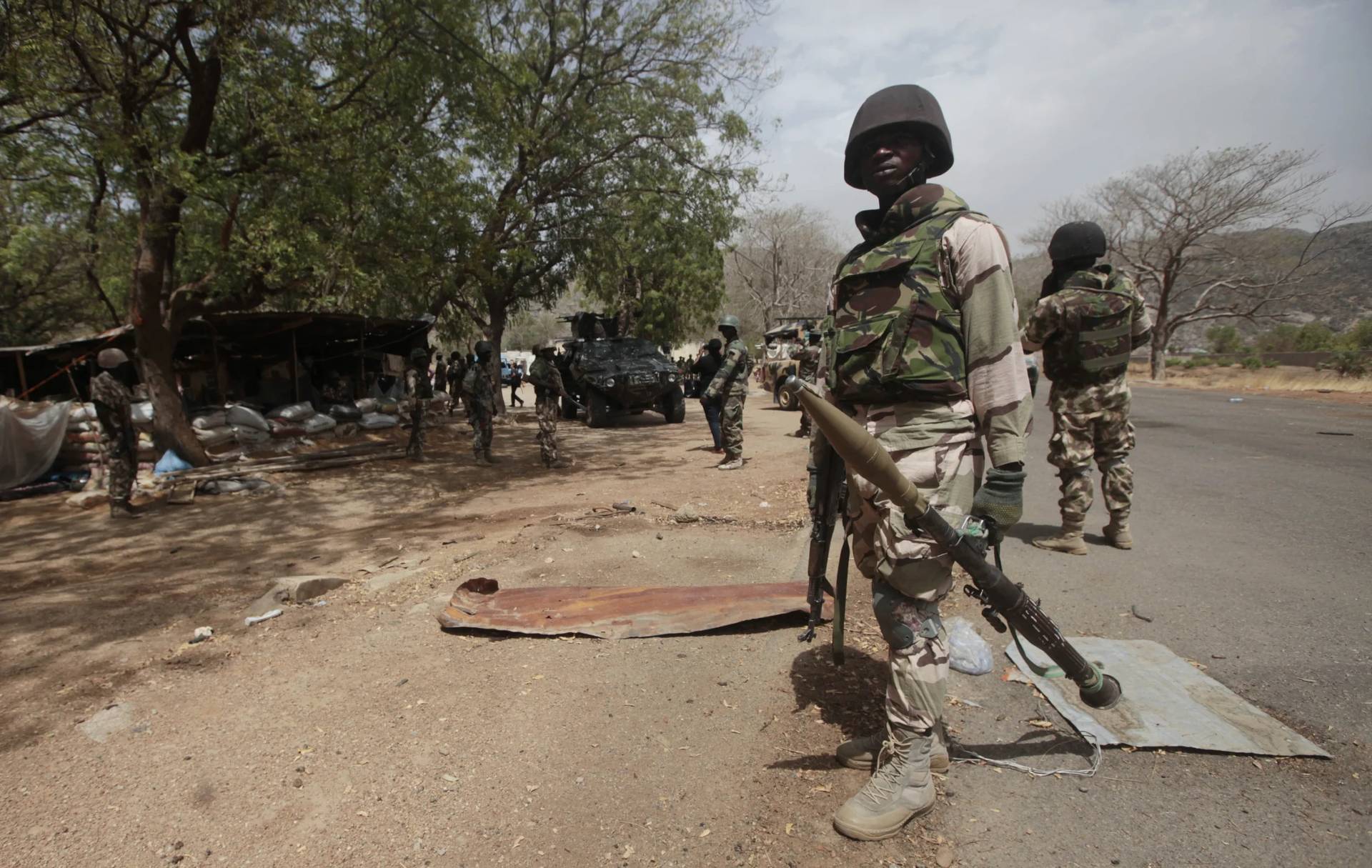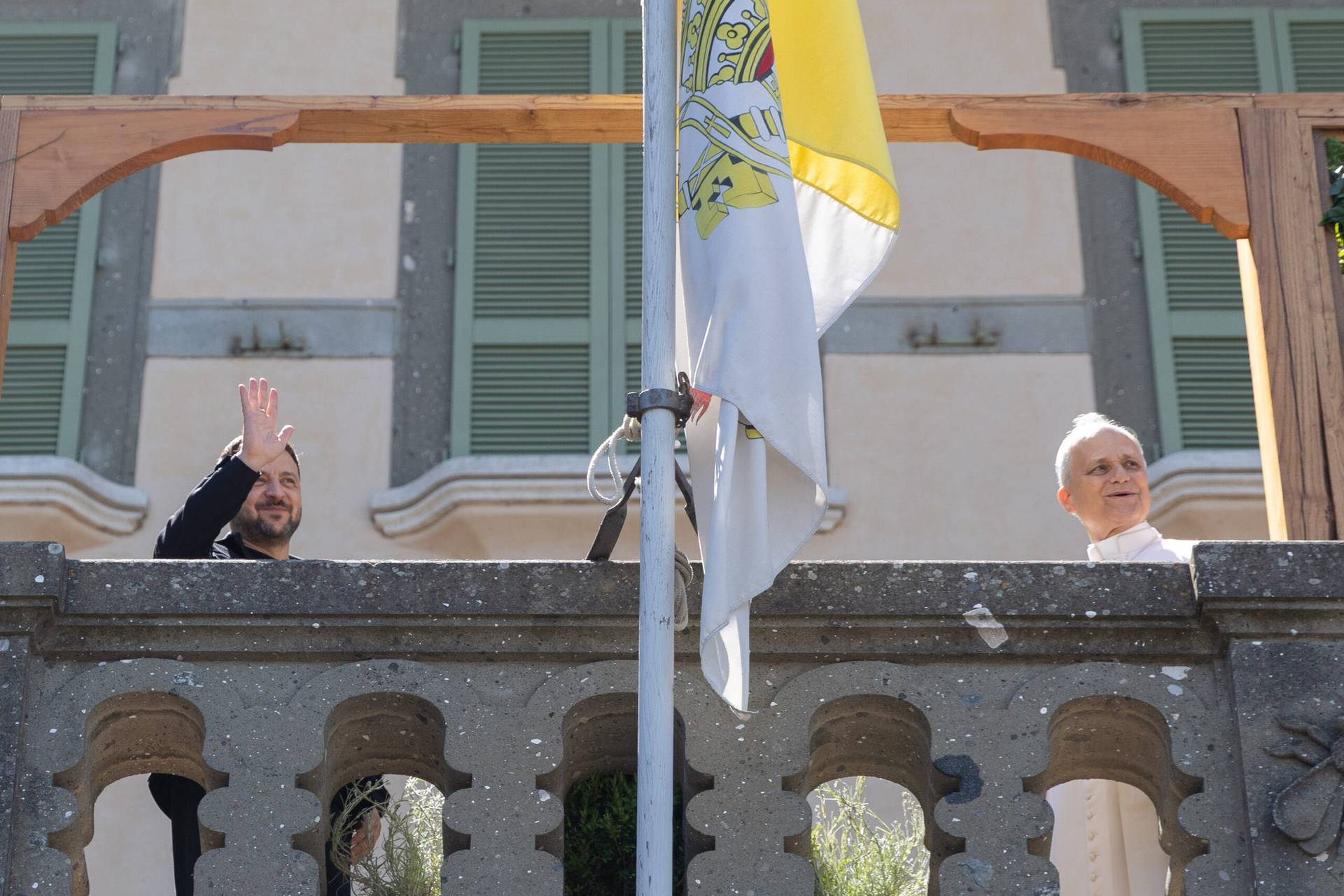Pope Francis delivered another gesture this week destined to burnish his legend for both humility and reform, deciding that an annual Mass in which newly appointed archbishops from around the world receive their symbol of office will no longer be held in Rome, but in their home archdiocese.
That event, called the Pallium Mass, traditionally was a highlight of the Roman summer. Francis has now taken himself out of the equation, stipulating that the pallium, a woolen cloth symbolizing service, will be presented to each archbishop individually by the papal ambassador in his country.
Most people likely will see it as another way in which Francis is breaking with tradition, playing down the trappings of a royal court in the Vatican and emphasizing the importance of the local church. Those who paid careful attention during the Benedict XVI years probably would agree, expect for the “breaking with tradition” part.
In truth, Francis’ latest reform is not a departure from Benedict, but yet another instance in which the two pontiffs seem to be singing from the same songbook.
One of Benedict’s own first decisions after he took office in 2005 was that he would no longer preside personally at beatification Masses, and that those services would no longer be held in Rome. (Beatification is the last step before sainthood, allowing someone to be called “Blessed.”)
That choice, too, was about the importance of the local Church, since beatification authorizes veneration of a figure for a local community, while canonization is for the entire Church. Benedict XVI was also sending a signal that the pope doesn’t have to be the center of attention — the same point Francis is making about the pallium.
That’s just the tip of the iceberg in terms of continuity. Consider these other examples:
Climate change/the environment: As the world awaits Francis’ forthcoming encyclical letter on ecology, it’s worth remembering that Benedict XVI devoted so much attention to the environment that he was dubbed the “Green Pope.” Among other measures on his watch, the Vatican signed an agreement to become Europe’s first carbon-neutral state (albeit a tiny one) by replanting a stretch of Hungarian forest to offset its carbon use, and installing solar panels atop the Paul VI Audience Hall.
Financial clean-ups: Francis has made avoiding future financial scandals a linchpin of his Vatican reform. The clean-up began under Benedict, the first pope to open the Vatican to outside secular inspection through the Council of Europe’s anti-money laundering agency Moneyval. It was also Benedict who launched a new financial watchdog agency under the leadership of Swiss anti-money laundering expert René Bruelhart, and who triggered a review of accounts at the Vatican Bank.
Child sexual abuse: Francis has committed to “zero tolerance” for sexual abuse and has created a new Commission for the Protection of Minors to lead the charge. Here, too, he’s building on Benedict’s lead, who defended “zero tolerance” while he was a Vatican official and made it the Church’s official policy as pope. Benedict was the first pope to meet with victims and the first to apologize for the crisis in his own name. He also moved aggressively to weed abusers out of the priesthood, laicizing some 400 priests facing abuse charges in his last two years in office alone.
Outreach to non-believers: Francis is celebrated for sitting down with anybody, including a left-wing atheist journalist in Italy for a couple of blockbuster conversations. That follows Benedict’s example, who brought Italian Cardinal Gianfranco Ravasi to Rome to launch the “Courtyard of the Gentiles” project to foster conversations with non-believers. One of the few times Benedict has broken his post-resignation silence was to write atheist mathematician Piergiorgio Odifreddi in late 2013, thanking him for writing a book about him and raising some points for conversation.
Even Francis’ much-vaunted personal humility can be eerily reminiscent of Benedict.
For instance, Francis drew kudos shortly after his election for returning to Rome’s Casa del Clero, a clerical residence where he’d been lodged before the conclave, to pack his own bag and to pay his own bill. Yet immediately after his own election eight years before, Benedict had done essentially the same thing, heading over to his former apartment in Rome’s Piazza Leonina to gather his belongings on his own.
On his way out, Benedict stopped to knock on the doors of the three other apartments located on his floor. He didn’t want to say goodbye to the cardinals who lived there, but to thank the nuns who did the cooking and cleaning for being such good neighbors. (As a footnote, some of these sisters were Americans, members of The Religious Sisters of Mercy in Alma, Michigan).
None of this is to deny the obvious differences between Benedict and Francis, beginning with the contrast between an intellectual and a pastor. Politically, Francis’ instincts are probably more centrist, though that may also have to do with Benedict’s penchant for focusing on abstract principles and Francis’ on concrete situations.
Why are the commonalities between the two pontiffs often hard to perceive?
In part it’s because Benedict had a poor public narrative — “God’s Rottweiler,” the “Vatican’s Enforcer,” and so on, which often meant attractive aspects of his agenda and personality were played down. With Francis, they’re almost always the top of the story.
Whatever the explanation, the reality is that beyond superficial differences in personality and style, substantively these two can almost seem like the Everly Brothers of popes, singing in pitch-perfect harmony.
A big week on women
Despite Francis’ generally positive media reception and still-strong poll numbers, there is a growing undercurrent of dissatisfaction in some circles of both the Church and of secular opinion with his record on women’s issues.
For one thing, the pontiff’s homespun pastoral rhetoric can sometimes strike women as patronizing, such as his attempt in June to deflect a question about a woman heading a Vatican department by joking that “priests often end up under the sway of their housekeepers.” His tongue-in-cheek advice to nuns in 2013 not to end up as “old maids” also fell flat for some women.
At the policy level, Francis has ruled out female priests, but also repeatedly called for greater attention to women’s voices and more substantive roles for women in the Church.
In that sense, next week shapes up as potentially pivotal in terms of perceptions of how serious the pontiff is on this score.
Most importantly, the Pontifical Council for Culture under Cardinal Gianfranco Ravasi is holding its annual plenary assembly Feb. 4-7, and this time the subject is women’s issues. A preparatory document setting the table for the discussion was released this week and will be presented in a Vatican news conference on Monday.
Typical for any Ravasi endeavor, the ambition of the plenary assembly is vast, touching on a sprawling range of issues. The meeting will touch, for instance, on sexual violence and whether there’s a distinctive female identity, as well as whether elective plastic surgery is actually a form of “aggression” against women.
In a Crux interview in January, Ravasi said one of the female consultants who worked on the document called plastic surgery the burqa of the Western woman, meaning the socially approved form of disguising her real face.
However, the plenary assembly also contains a strong focus on women’s roles in the Church.
The working document concedes that despite abundant rhetoric on the importance of women, to date they’ve had “little impact” on the Church’s official structures. It clearly rejects the idea of female priests, but is blunt about the absence of other leadership opportunities.
“Why with their great presence have women had so little impact on the Church’s structures?” it asks. “In pastoral praxis, why are we giving women only those tasks of a somewhat rigid scheme, the fruit of ideological and ancestral left-overs?”
The document acknowledges that women often work as top managers in other walks of life, but have no corresponding decisional role in the Church.
“If, as Pope Francis says, women have a central role in Christianity,” says the document, “this role must find a counterpart also in the ordinary life of the Church.”
People will be looking to see if the plenary assembly gets concrete, making specific recommendations to Francis to boost the visibility and influence of women at leadership levels — and, if so, whether the pope takes action.
Also next week, the Vatican will hold a news conference to present the first “International Day of Prayer and Reflection against Human Trafficking.”
Reflecting one of the pontiff’s keenest social priorities, it’s an initiative of the Vatican’s Congregation for Religious, along with a cross-section of women’s orders, that have long been pioneers in anti-trafficking campaigns.
On the dais on Tuesday in the Vatican Press Office will be Brazilian Cardinal João Braz de Aviz of the Congregation for Religious and Italian Cardinal Antonio Maria Vegliò of the Council for Migrants and Refugees, along with four nuns, including Sister Carmen Sammut of Malta, the elected president of the International Union of Superiors General, a membership organization of about 1,800 leaders of the world’s female congregations.
The news conference, and the anti-trafficking initiative it’s intended to present, creates an opportunity to showcase how women can play a lead role in the Church without having to be clergy to do it. It’s one of the rare cases in which religious sisters sit alongside Vatican heavyweights in a public arena as equals.
Observers will be watching to see if the contributions of Sammut and the other sisters involved in organizing the “Day of Prayer and Reflection” come off simply as window-dressing, or if they’re real protagonists in shaping the Church’s strategy.
One footnote to Monday’s news conference for the Council of Culture is that one of those expected to be on hand is Italian actress Nancy Brilli, who appeared in a video produced ahead of the Plenary Assembly to invite women from around the world to submit messages for the gathering.
Italians already familiar with Brilli’s on-screen persona took it all in stride. English-speakers, however, didn’t know her, and so assumed she had been selected not for her star power, but as a model of femininity.
Her vampish, slightly over-sexed performance rubbed many women the wrong way, coming off as another instance of the Vatican being a bit tone-deaf to how women react.
Looking back, Ravasi said in January, “I understand now we probably made a mistake with the actress.”
It’ll be interesting on Monday to see if Brilli herself has anything to say.
‘African Moment’ may not be what you think
Many commentators have observed that one of the most significant storylines from last fall’s Synod of Bishops on the Family was the emergence of African prelates as leading players. In general, African participants at the synod defended what would conventionally be seen in Western terms as conservative positions on sexual morality and family life.
That’s led some to sense a looming “African moment” in Catholicism, in which Africans push the Church toward a deeper embrace of traditional positions on such matters.
There’s some merit to the forecast, but a note of caution is also in order.
When you ask African Catholics for their views on matters such as homosexuality or abortion, you’ll most often get strongly conservative answers. However, when you ask them to tick off their highest priorities, those are rarely the topics they cite, because, quite frankly, they have more urgent matters to address.
A story out of the Democratic Republic of Congo (DRC) in recent days makes the point.
DRC is a country of about 75 million people, more than half of whom are Catholic, and where the Church plays a central role in social and political life. At the moment, it’s mired in chaos as its senate debates a change to the country’s electoral law that would allow President Joseph Kabila, who’s been in power for 14 years, to seek another mandate when his current term expires next year.
Protests and clashes stirred by Kabila’s efforts to maintain his grip on power have left more than 45 people dead and 1,000 injured, and also led to a near-complete blackout of Internet services across the country as the government attempted to keep the backlash from spreading.
The Catholic Church has given its blessing to the anti-Kabila protests. In a late January statement, Cardinal Laurent Monsengwo Pasinya of Kinshasa called on citizens to use all “legal and peaceful means [to oppose] any attempt to change laws essential to the electoral process.”
Monsengwo also demanded that police and security forces loyal to Kabila stop using violence to quell the protests.
“Stop killing your people,” he told the police in a press statement.
The Church shut its schools in Kinshasa in late January, in part to keep students safe, but also as a protest against what Monsengwo and other Congolese prelates saw as government abuses of power.
When Monsengwo speaks, people tend to listen, given that he’s arguably the closest thing the DRC has to a “Father of the Country.”
Back in the early 1990s, what was then Zaire was feeling its way toward life without strongman Mobutu Sese Seko, who ruled the country from 1965 to 1997. A transitional “High Council of the Republic” needed someone with moral authority and a reputation for independence to lead the process of drafting a new constitution, acting as the de facto national leader during the fin de regime period.
Nobody from the political class fit the bill, so the nation instead turned to Monsengwo, then the auxiliary bishop of Kisangani. He not only served as president of the council, but also as transitional speaker of the national parliament in 1994.
Monsengwo’s importance to Congolese politics reflects a broad reality of life for the Church outside the West. In many parts of the developing world, religious bodies are sometimes the only meaningful expressions of civil society — the only zones of life where protest can take shape, and where concern for the common good can be articulated.
As a result, the priorities of African Catholic leaders tend to be shaped by what’s most urgent in their backyards: good government, conflict resolution, the fight against political and corporate corruption, the consequences of climate change, and the inequities of a free-market globalized system.
In other words, yes, an African moment likely has arrived in Catholicism. Just don’t think their top priority will be fighting Western battles, because part of what it means to be a protagonist is that you’re not content to let someone else dictate your agenda.
















